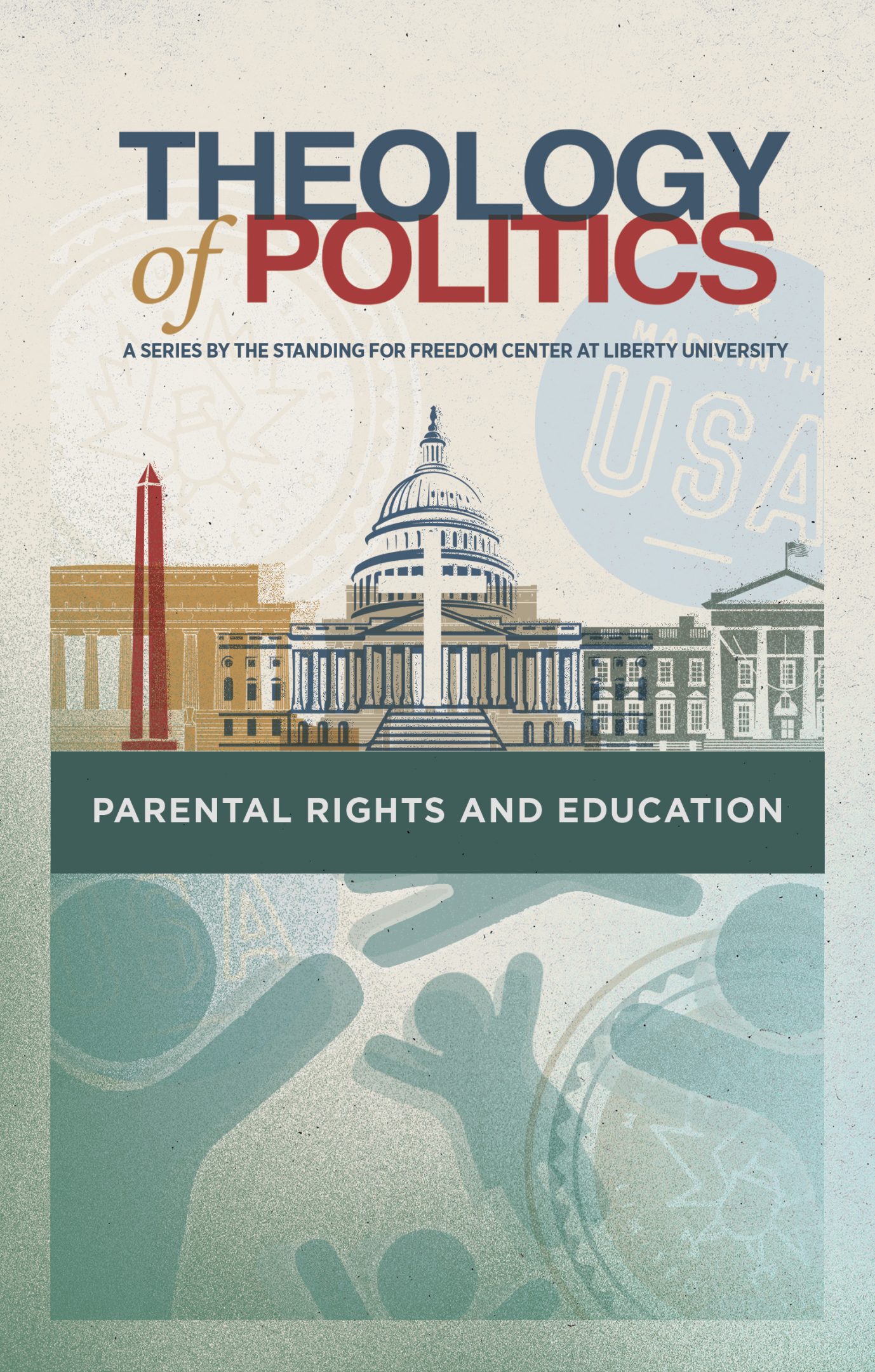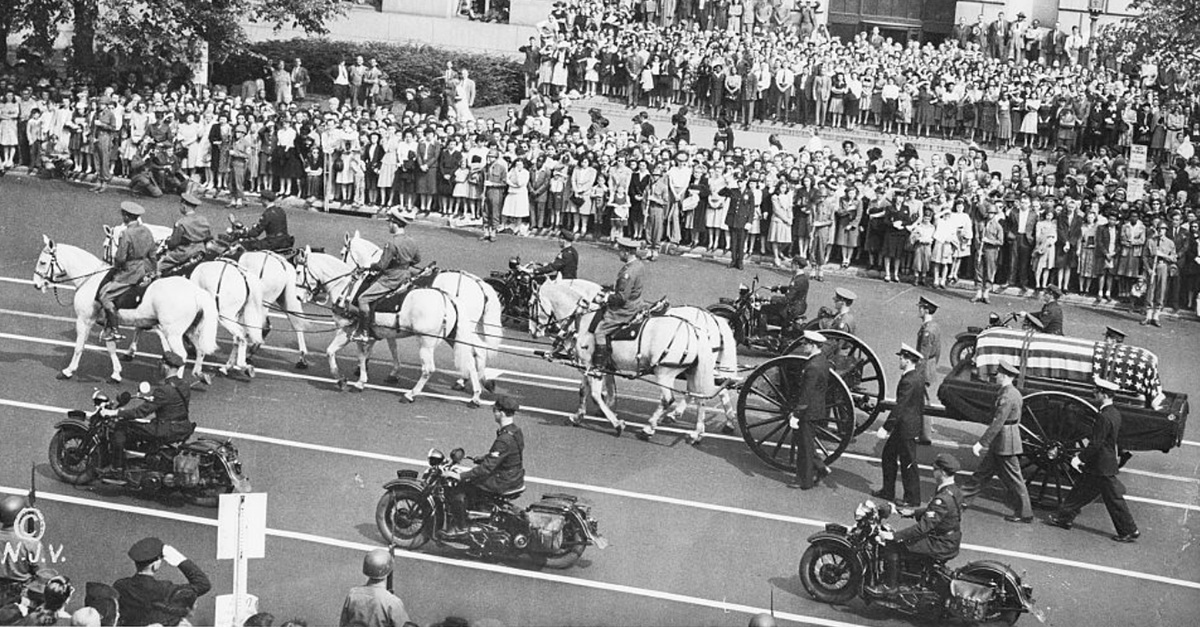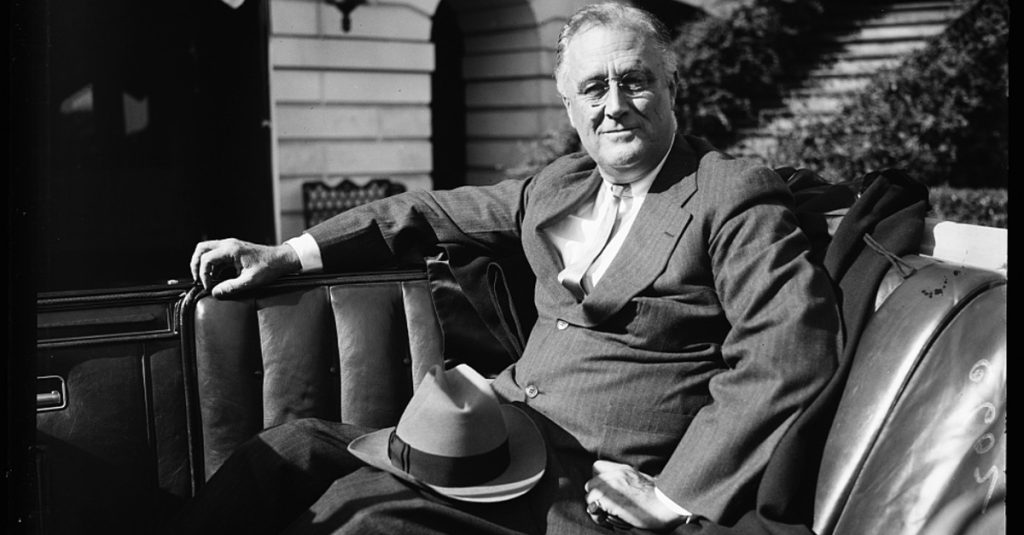


Get a free copy of Parental Rights & Education when you subscribe to our newsletter!

He was a beloved president whose optimism and Fireside Chats buoyed the nation during the Great Depression and World War II, but his embrace of government interventionism and socialist programs forever altered the balance of power in our constitutional republic.
At 1 p.m., on April 12, 1945, while sitting for a portrait in “the Little White House” in Warm Springs, Georgia, Franklin Delano Roosevelt suddenly slumped over. Efforts to resuscitate him were futile, and he was pronounced deceased shortly after 3:30 p.m. The 32nd President of the United States, 83 days into his fourth and final term, was 63 years old. The likely culprit was a cerebral hemorrhage. At the request of his wife, Eleanor, an autopsy was not performed.
Hundreds of thousands of mourners lined the railroad tracks from Georgia to Washington, D.C., and then to Hyde Park, New York, where his body was interred on April 15. They were all there to pay their last respects to the longest-serving and one of the most influential presidents in American history. His landslide victories during the Great Depression helped instigate his New Deal and provided opportunities for him and his Cabinet to forever adjust the roles of government, while his Fireside Chats helped soothe and buoy the nation’s spirits during a horrific, two-theater war.
Roosevelt was a two-term governor of New York and had served in President Woodrow Wilson’s cabinet. He had been labeled a rising star in the Democrat Party, like his distant cousin Theodore years earlier in the Republican Party. The 1929 Stock Market Crash and the subsequent Great Depression were associated with the sitting president, Herbert Hoover, and provided plenty of reasons for an “anybody but Hoover” election in 1932.
FDR’s first 100 days in office after a landslide victory initiated a wave of centralized intervention strategies and socialist government programs that were specifically designed to assist the poor and eliminate the possibility of repeated financial collapse, but they would ultimately shift the fundamentals of our constitutional republic and the separation of powers.

By the day of Roosevelt’s inauguration in early 1933, all states had closed their banks. The Emergency Bank Act reopened the banks in less than two weeks. FDR removed the gold standard, providing the opportunity for government to print and borrow money without tangible backing. Additionally, bank patrons had their deposits secured up to $2500 under the Federal Deposit Insurance Corporation (FDIC).
The Agricultural Adjustment Act was passed to pay farmers not to grow crops, eliminating surpluses and stabilizing crop prices. To combat 25 percent unemployment, government food assistance and public works projects were enacted, with millions of dollars being sent to states to reduce the strain from hunger. The Civilian Conservation Corps put 250,000 single men to work planting trees and building scenic roads, including the Blue Ridge Parkway, while other now-employed workers constructed and completed hydroelectric dams, including the Tennessee Valley Authority and the Hoover Dam, which worked as economic rejuvenators. Government jobs expanded the workforce and reduced unemployment.
FDR’s New Deal did not stop after 100 days. Social Security, opportunities for union organizations, the Emergency Relief Act, the Securities and Exchange Commission, and other initiatives were also promoted and passed by Congress. The American ethos of self-reliance and pulling yourself up by your bootstraps started to wane.
The result of the New Deal was increased governmental assistance, which led to increased government dependence. While many of FDR’s programs were well-intentioned, their effects have had lasting implications on the size, role, and power of the federal government.
In spite of the attempted short-term and long-term fixes for the Great Depression initiated by FDR, it was not until entry into the Second World War that financial stability became available to the average American. Men went to war and women went to the factories to work. FDR’s health suffered from the pressures of war, as well as from polio decades before that left him paralyzed and in need of leg supports, crutches, or a wheelchair. His lack of mobility affected his cardiovascular health and increased his blood pressure.
FDR died before seeing Germany or Japan surrender.
As such, it is unknown whether Roosevelt would have ended the war in the same manner as Harry Truman did by dropping two atomic bombs on Japan.
FDR did not make that judgment call, although he encouraged the development of the atomic bomb, eventually known as the Manhattan Project, in 1939. That threat did not deter Emperor Hirohito, who ignored the articles of surrender presented on July 26, 1945, in Potsdam, Germany. Ten days later, the first bomb was dropped by the Enola Gay on the city of Hiroshima. Nagasaki was bombed three days after.
So FDR’s legacy is really a mixed bag. He successfully managed both the military and the homefront during World War II, and his foresight in allowing the development of the atomic bomb helped bring a quick, less bloody end to the war. On the other hand, America has been fundamentally changed by FDR’s lead in expanding the scope and size of the federal government.

Government leaders do not recognize that “sunset clauses” are necessary on emergency measures, which can be seen in the fact that many of FDR’s New Deal and other initiatives continued for decades after the Great Depression had ended. Programs, benefits, and even officeholders should have ending dates. Comprehensive evaluation related to any program’s or person’s effective and efficient operation should occur with regularity and should be accomplished by the monetary branch of the federal government, the House of Representatives.
The U.S. Supreme Court is now expected to monitor laws as they had during the first term of the FDR administration. As a part of the New Deal, Roosevelt wanted to use his executive power to appoint an additional six justices to ensure his agenda was never thwarted. It didn’t work. His proposal was ultimately defeated in Congress; however, by the time of his death in 1945, FDR had appointed eight of the nine justices sitting on the Court so his influence would continue for decades. What’s more, today’s radical progressives are trying to resurrect FDR’s strategy of court packing to ensure there is never any constitutional pushback on their own agenda.
The elimination of the gold standard increased the money supply, as well as dramatically increased the national debt, which continues to be out of control, now at $34 trillion and counting. Union bargaining, price controls, minimum wages, and paying farmers not to grow certain crops are now considered standard behaviors, even though they are antithetical to free market capitalism.

FDR also made a deal with Soviet dictator Joseph Stalin during negotiations at the Yalta Conference in February 1945 (see photo above) that effectively put all of Eastern Europe under the boot of communist tyranny for the next 45 years and kicked off the Cold War. Whether any president could have come up with a different or better solution is unknown, but the impact of allowing communism to take root so suddenly and so significantly in so many countries emboldened Stalin and led to the loss of freedom and other tragic consequences for tens of millions of people. With communism on the march, a domino effect began, and other countries were soon overthrown by communist dictatorships, including China, North Korea, Cuba, and Vietnam, and tens of thousands of Americans would die in hot wars against communist foes. Although the Soviet Union fell in the late 1980s, its lasting vestiges and influence continue to reverberate today, including in the United States.
In 1951, the 22nd Amendment was ratified, stating that a President could no longer serve more than two elected terms. Unfortunately, the overall structure of the federal government was realigned by FDR with the executive branch having more authority than the legislative or the judicial branches.
What can be done to rectify these realities?
“Those who fail to study history are destined to repeat it.” As part of the Standing for Freedom Center’s commitment to our readers, “This Week in History” will now be a regular offering on our website. We hope you enjoy this journey into America’s past so that we as Christians are better equipped to not only avoid past failures but to emulate previous successes.
If you like this article and other content that helps you apply a biblical worldview to today’s politics and culture, consider making a small donation here.
Christian conservative news and issues that matter. Curated just for you!